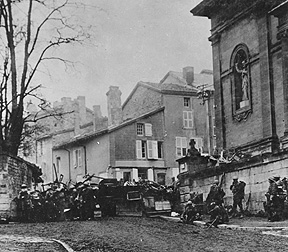Being in France has been nothing short of an exciting adventure for me. One of my most important discoveries has been French popular music. Lately I've been copying the words and singing along as we used to do in high school French class every Friday. Songs help me to practice articulating French sounds and become familiar with common phrases so that I don't have to think about them.
My favorite vehicles to music is Cherie radio (100.6) and the game show, "N'Oubliez Pas Les Paroles" (Don't forget the words). Learning French through music makes my heart sing (no pun intended). The music is is melodic and infectious, and I wanted to share it with you, courtesy of YouTube. They are divided by the artists (but not prioritized) with an English translation of each marked in blue. Get a taste of France's popular music and enjoy it.
Celine Dion
Je Ne Vous Oublie Pas English
S'il Suffisait D'aimer English
Calogero
Fréro Delavega
Le Chant Des Sirènes English
Amir
J'ai Cherché English
Vianney
Les filles d’aujourd'hui English
Claudio Capéo
Riche English
Louane
Maman English

































